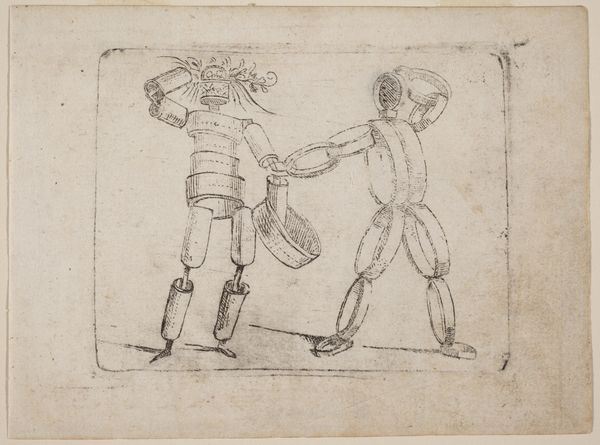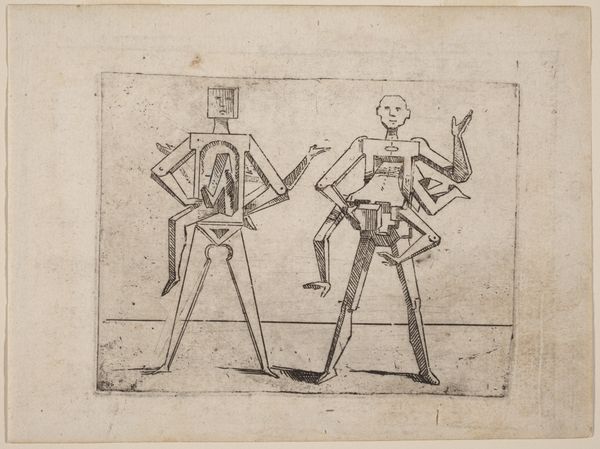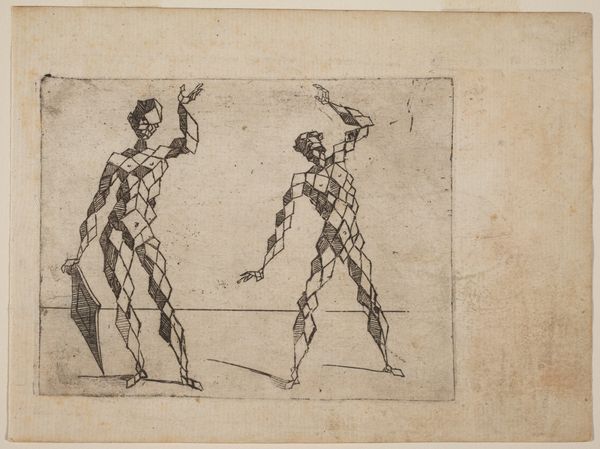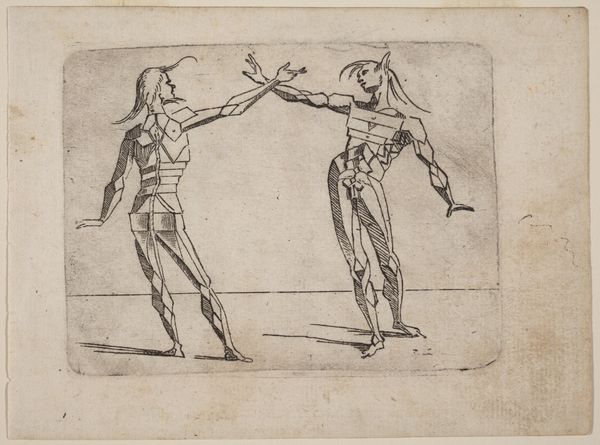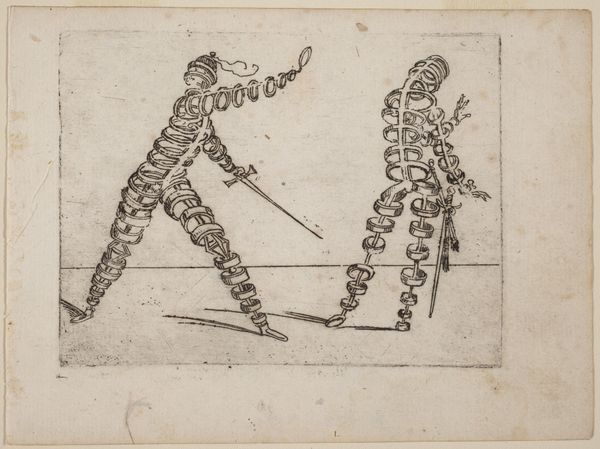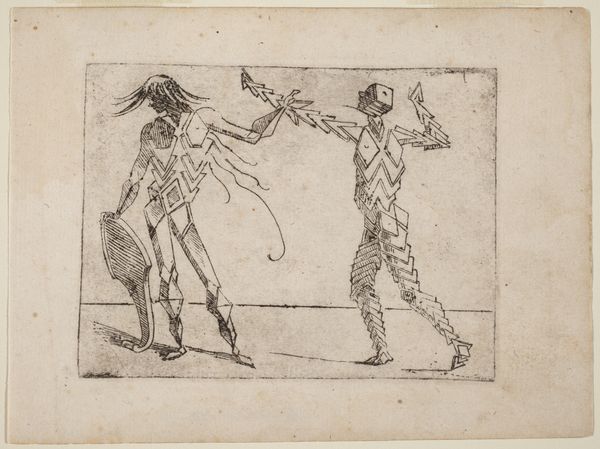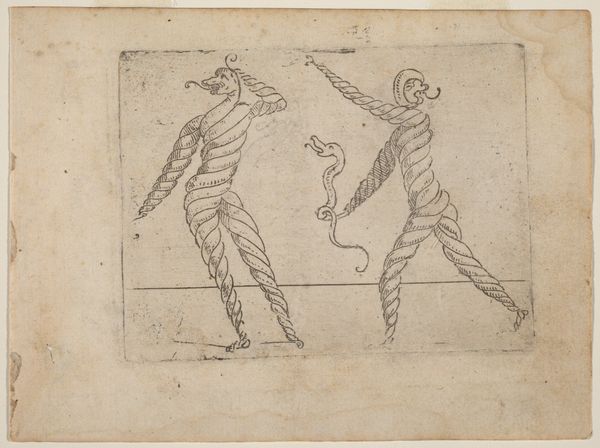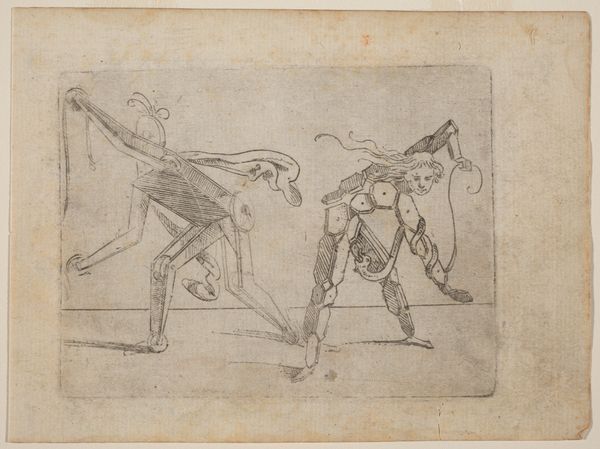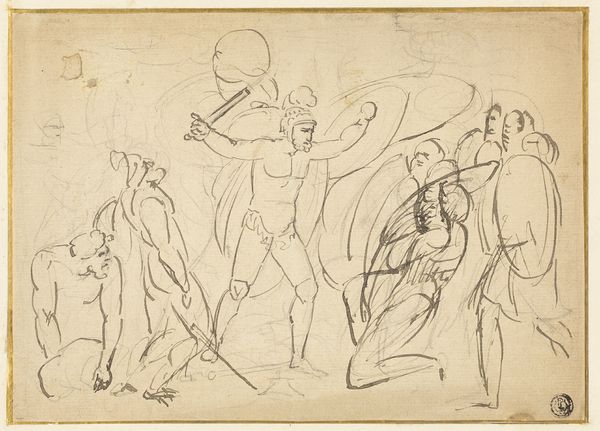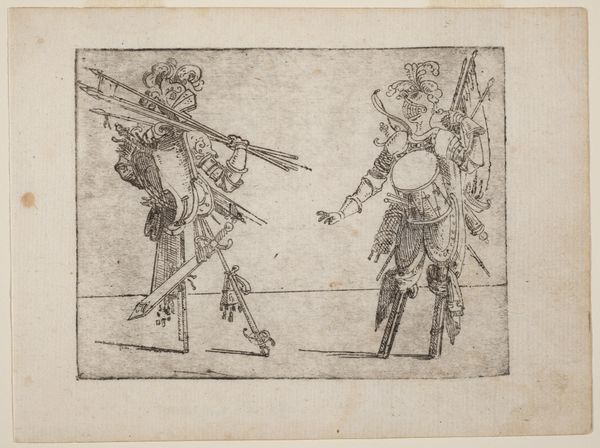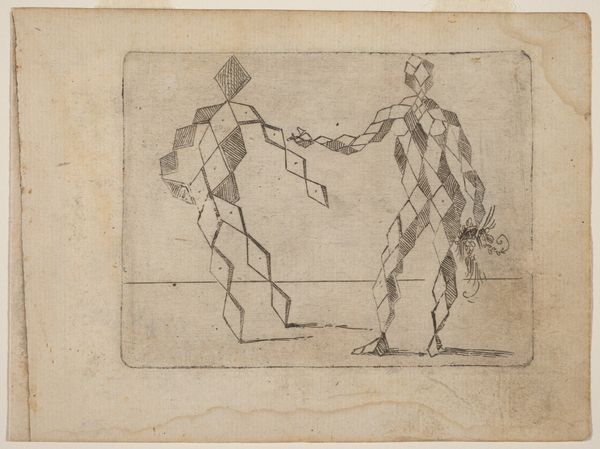
drawing, print, engraving
#
portrait
#
drawing
# print
#
mannerism
#
figuration
#
form
#
engraving
Copyright: National Gallery of Art: CC0 1.0
Curator: This engraving, dating back to 1624, is by Giovanni Battista Bracelli, and is part of a series called "Bizzarie di varie Figure." Editor: It’s… certainly bizarre. They seem to be constructed entirely out of rackets. There’s an almost playful, unsettling quality to their forms. Curator: It's important to remember the artistic climate of the time. Bracelli worked in the Mannerist style. That meant deliberately distorting forms, playing with perspective, and pushing against the High Renaissance ideals of harmony and realism. He seems fascinated by the possibilities of abstraction. Editor: Fascinating! How does his work fit into the broader context of printmaking at the time? This particular image really gets you thinking about how prints were produced, sold and valued. This sort of challenges assumptions about authorship and value, especially given that prints often had a wide circulation. Curator: Well, the "Bizzarie" series was likely produced in an artisanal workshop, catering to a wealthy, educated elite with an interest in intellectual games and visual wit. This would have been distributed widely in printed form and perhaps also appreciated as singular, fine art objects by collectors. The engraving technique itself involved skilled labor, transforming metal plates through carefully applied pressure. Editor: These racket-figures seem very self-conscious about being artworks! There’s definitely a knowing commentary on the artistic conventions. The tools are standing in for the figures! What statement do you think Bracelli was trying to make on artistic production at this time? Curator: The choice of rackets, or other everyday objects forming figures could be read as democratizing art. By creating these human forms, it reflects on the broader societal changes of his time. Also, consider how institutions—academies, patrons—influenced the production of images and the opportunities available to an artist. Editor: That is insightful. It's remarkable how much complexity arises from what initially seems like a simple, strange composition. It has shifted my view completely. Curator: It’s the enduring power of art to stimulate conversation across centuries!
Comments
No comments
Be the first to comment and join the conversation on the ultimate creative platform.
